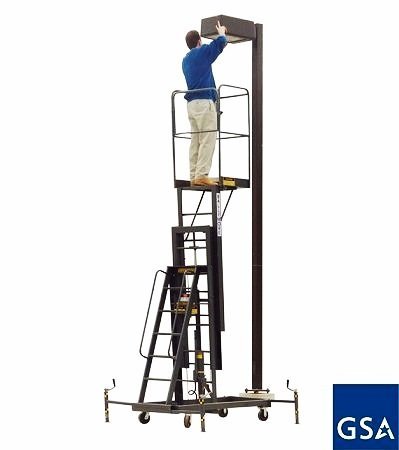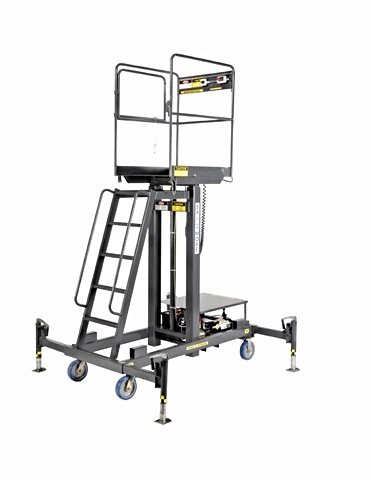Pro Tips for Maintaining Your Lift in Leading Problem: A Comprehensive Review
Making sure the optimum functioning of a lift system is imperative for a efficient and safe operation in various settings, from industrial storehouses to commercial buildings. By adhering to an organized upkeep routine and preemptively resolving possible concerns, lift proprietors can mitigate costly downtime and safety and security threats.

Value of Normal Upkeep
Regular maintenance of your lift is important to ensure its optimal efficiency and longevity. By adhering to a routine upkeep timetable, you can recognize and resolve potential issues prior to they escalate right into expensive fixings or unforeseen downtime. Routine maintenance jobs such as lubricating relocating components, checking for wear and tear, and examining hydraulic systems can help protect against breakdowns and guarantee safe procedure.
Overlooking regular maintenance not just compromises the efficiency of your lift but additionally poses safety and security risks to customers and building. Elements that are not effectively kept may fail suddenly, causing crashes or damages to the lift itself. Moreover, resolving concerns beforehand through upkeep can expand the life expectancy of your lift and decrease the chance of major malfunctions.
In addition to boosting safety and efficiency, routine upkeep can likewise conserve you cash in the long run. By investing in precautionary maintenance procedures, you can stay clear of expensive fixings or replacements that may arise from neglecting the maintenance of your lift. In general, focusing on normal maintenance is necessary for making best use of the functionality and durability of your lift system.
Top Components to Inspect

Additionally, pay very close attention to the lift's security attributes, such as emergency stop buttons, safety and security sensing units, and interlocking devices, to ensure they are operating appropriately. On a regular basis evaluate the lift shaft for particles or blockages that might restrain the activity of the lift vehicle. Lastly, don't neglect to analyze the doors, hinges, and door drivers to ensure smooth opening and closing procedures. By diligently evaluating these leading components, you can catch potential concerns early and guarantee your lift stays in leading problem.
Aggressive Troubleshooting Techniques
When encountered with possible lift system concerns, adopting proactive repairing methods can significantly boost operational efficiency and prevent pricey downtime. One of the essential positive repairing strategies is to consistently analyze and keep track of lift performance information. By tracking metrics such as lift rate, motor temperature, and power usage, maintenance groups can determine early indications of prospective problems and take restorative activities prior to they intensify. Conducting routine aesthetic examinations of critical elements, such as wires, wheels, and security mechanisms, can likewise aid in finding wear and tear or imbalances that could bring about malfunctions. Furthermore, carrying out a preventative upkeep schedule that consists of lubrication of moving components, testing of emergency situation brakes, and calibration of sensors can proactively address typical lift system issues.
Moreover, investing in training programs for maintenance staff on repairing techniques particular to the lift version mounted can encourage them to diagnose and deal with problems promptly. By remaining ahead of possible troubles through positive troubleshooting, lift operators can make certain a smoother and a lot more trusted operation while minimizing the threat of unforeseen break downs.
Vital Lubrication Practices
Applying appropriate lubrication methods is crucial for making certain the smooth operation and longevity of lift systems. Routine lubrication helps reduce rubbing between moving components, stopping wear and tear that can cause costly repair services and downtime. Complying with a stringent lubrication timetable is important. when it comes to lift upkeep.
Picking the ideal lubricating substance is the first step in reliable maintenance. Different components of the lift system might call for particular kinds of lubricants, such as oil or oil. Get in touch with the maker's guidelines to determine the suitable lubes for each part.

Address any issues promptly to stop top article further damages and ensure the ongoing smooth operation of your lift system. By focusing on appropriate lubrication methods, you can prolong the life expectancy of your lift and enhance its efficiency.
Precaution for Lift Operators
In order to keep a risk-free working atmosphere and promote operational efficiency, lift operators must rigorously follow suggested security methods, together with prioritizing essential lubrication practices for optimal see here now lift performance. Safety steps for lift operators are essential to stop crashes and ensure the smooth functioning of the lift system. Operators ought to go through comprehensive training on appropriate lift procedure, emergency situation procedures, and security standards. Routine tools assessments and maintenance checks are critical to recognize and deal with any kind of possible safety and security risks quickly. It is crucial for drivers to constantly follow maker recommendations for load abilities, functional limitations, and security attributes use.
Moreover, lift operators need to prioritize personal protective equipment (PPE) such as helmets, gloves, and harness when operating at heights or managing heavy lots. Clear interaction amongst drivers, upkeep technicians, and other workers is vital to stop misconceptions that might result in mishaps. Last but not least, drivers need to stay vigilant, focused, and avoid distractions while operating the lift to make sure the safety of themselves and others in the vicinity.
Conclusion
Finally, preserving a lift in leading problem is essential for making sure safety and security and effectiveness in operations. Routine upkeep, extensive evaluations of key parts, aggressive troubleshooting, proper lubrication techniques, and adherence to precaution are essential for extending the life-span of the lift and stopping crashes. read review By following these guidelines, lift drivers can make sure the continued functionality and safety and security of their tools.
By adhering to an organized maintenance program and preemptively dealing with prospective problems, lift owners can mitigate expensive downtime and safety dangers. Frequently examine the lift shaft for particles or blockages that can hamper the movement of the lift automobile.In order to preserve a secure functioning environment and support operational efficiency, lift operators should carefully adhere to suggested safety and security protocols, along with focusing on vital lubrication methods for optimal lift performance. Security procedures for lift operators are important to stop crashes and guarantee the smooth functioning of the lift system. Routine upkeep, complete examinations of essential parts, aggressive troubleshooting, proper lubrication practices, and adherence to security actions are important for lengthening the lifespan of the lift and avoiding accidents.